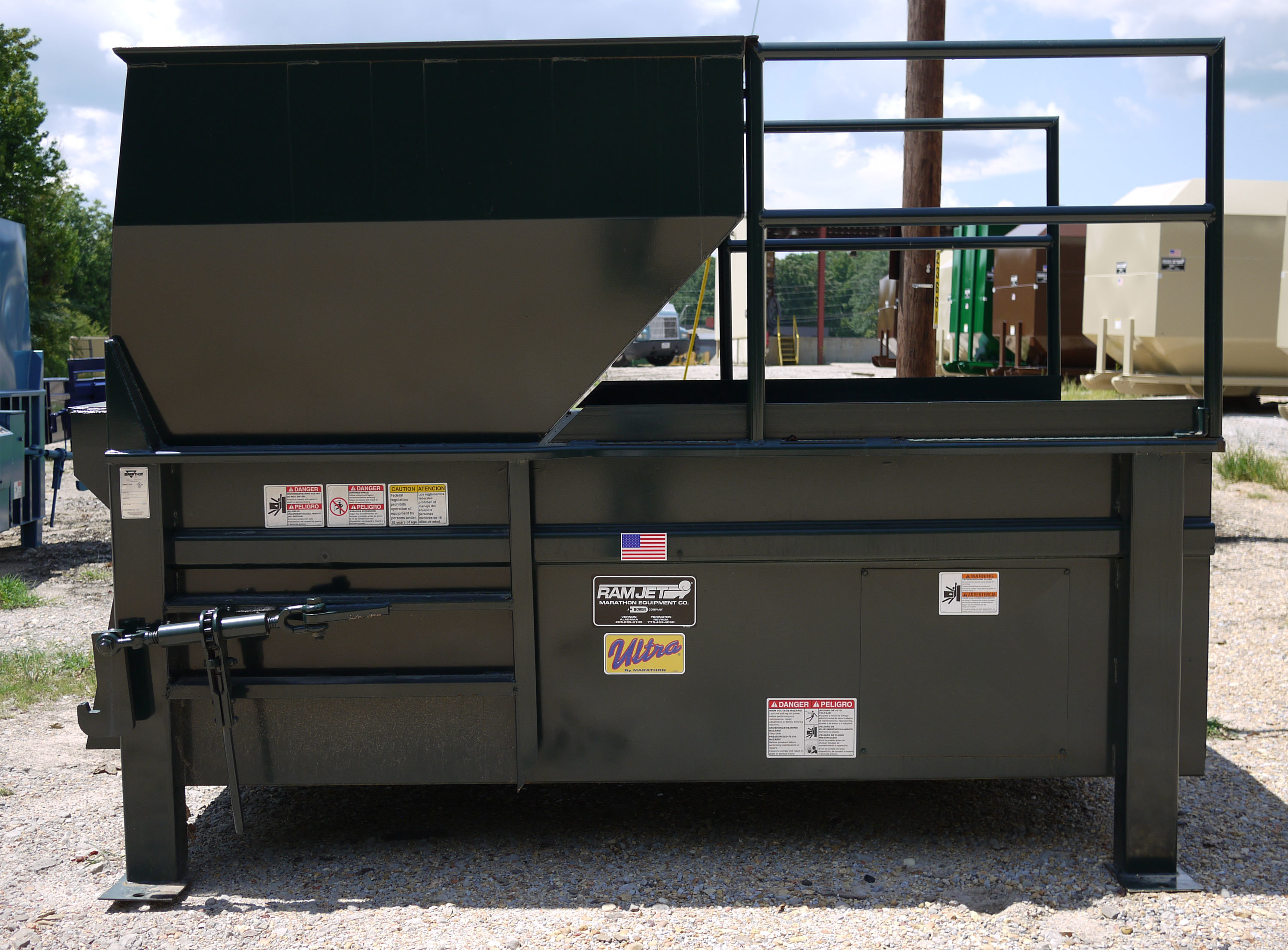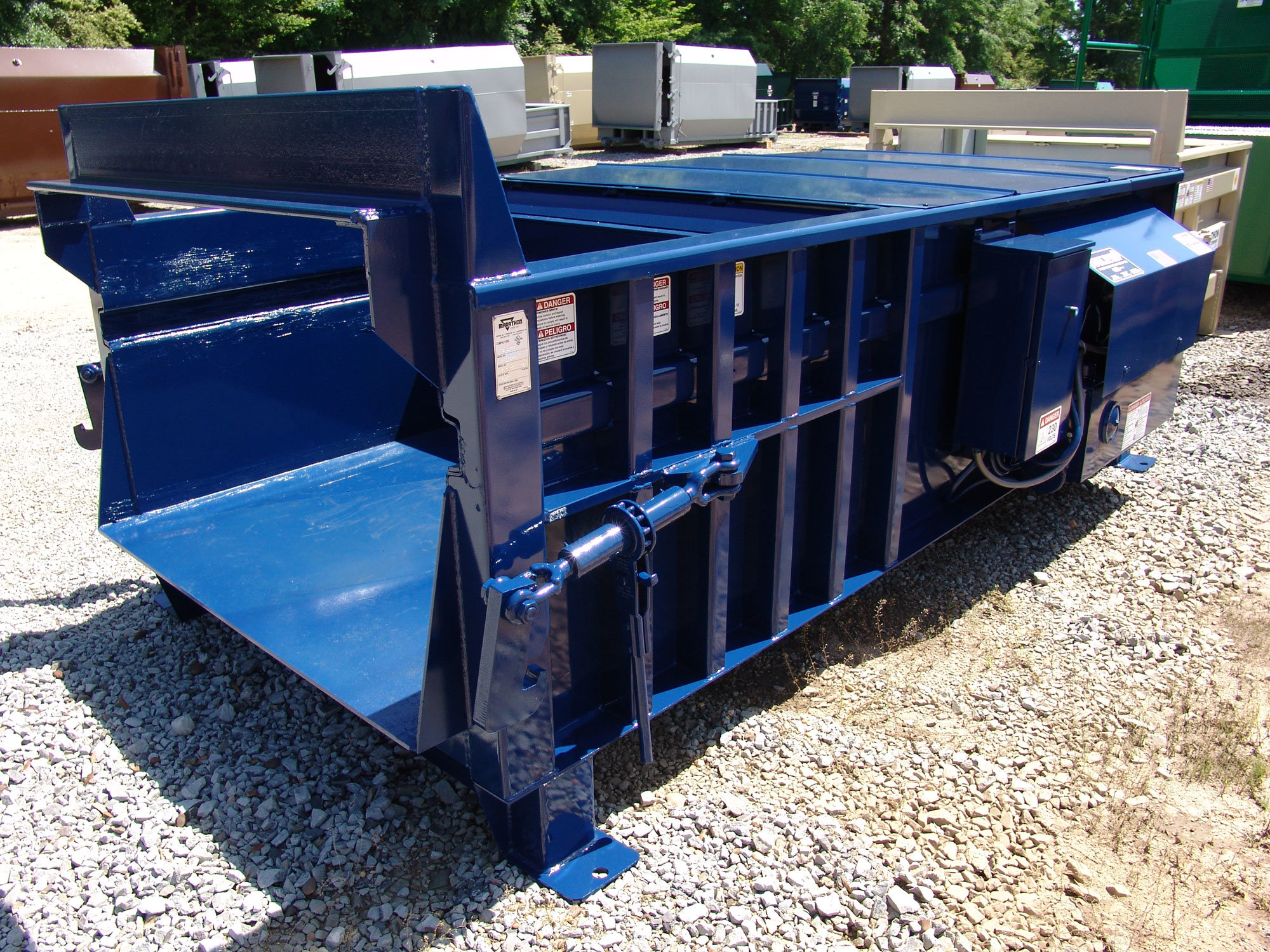A detailed guide to using Commercial trash compaction equipment effectively
Wiki Article
Comprehending the Different Uses Waste Devices in the Recycling Sector
The recycling market counts heavily on specialized waste devices to maximize processing and healing. Each tool, from shredders to balers, offers a distinct function that enhances general efficiency. Comprehending these functions is necessary for enhancing sustainability efforts. Commercial garbage compaction equipment. As innovation developments, new developments emerge, promising to change typical methods. This development elevates vital inquiries regarding the future of waste management and its effect on ecological conservation. What adjustments lie ahead for this critical sector?The Role of Shredders in Material Processing
Shredders play a critical role in the recycling industry by effectively processing different kinds of waste products. These equipments are made to lower huge things, such as plastics, steels, and natural waste, into smaller sized, workable items. This dimension decrease is necessary for subsequent recycling procedures, as it enables easier handling and sorting. In enhancement to helping with recycling, shredders enhance safety by decreasing the risk of injury connected with dealing with bulky waste things.In addition, shredders add to ecological sustainability by ensuring that products are refined in a method that makes best use of resource healing. They can manage a diverse variety of materials, making them functional tools in waste administration facilities. The reliable operation of shredders not just simplifies the reusing procedure yet likewise boosts the total efficiency of waste diversion efforts, promoting a round economic situation. Their significance in material handling can not be overemphasized, as they work as a foundational action towards sustainable waste monitoring techniques.

Just How Balers Enhance Performance in Waste Monitoring
Balers considerably improve effectiveness in waste monitoring by compacting various products into bundles, which streamlines storage space and transport. By compressing recyclables such as cardboard, plastics, and metals, balers substantially reduce the volume of waste. This compression not only takes full advantage of area in recycling facilities but likewise reduces the number of trips needed to transport materials, resulting in reduced fuel prices and decreased ecological impact.Balers add to boosted security in waste administration operations. Portable bales are simpler to pile and deal with, decreasing the risk of accidents linked with loosened materials. The consistent dimension of bales permits a lot more effective filling and discharging processes, improving procedures within recycling facilities. Furthermore, balers can boost the overall high quality of recyclables, as appropriately compressed materials are much less most likely to be contaminated. In general, balers play an important function in enhancing waste administration methods, advertising sustainability in the recycling sector.
Conveyor Systems: Enhancing the Recycling Refine
Integrating innovative equipment like balers considerably improves waste administration operations, however the efficiency of the reusing process is even more enhanced via making use of conveyor systems. These systems play a vital duty in the smooth transport of products within recycling centers. By assisting in the activity of numerous waste kinds, conveyor systems decrease manual handling and reduce the danger of contamination throughout the recycling process.Conveyor systems can be customized to fit the distinct formats and functional requirements of recycling facilities. Their capacity to operate continually enables a steady flow of materials, enhancing efficiency and guaranteeing that sorting and processing devices receives a consistent supply.
Equipped with attributes like flexible rates and automated controls, conveyor systems can enhance the flow of products, substantially improving general efficiency (Commercial garbage compaction equipment). These systems are essential in modern-day recycling operations, adding and enhancing procedures to efficient waste monitoring.
Sorting Equipments: The Secret to Material Recovery
Sorting machines are crucial elements in the reusing market, greatly improving the effectiveness of material recovery. These machines play a crucial function in the separation of numerous recyclable materials, enabling a structured process that optimizes resource removal. By using sophisticated technologies, such as optical sensing units and air classifiers, sorting devices can recognize and classify products based on their size, weight, and composition. This capacity ensures that steels, plastics, and paper items are properly separated, lessening contamination and enhancing the top quality of recycled result.The procedure of arranging machines substantially minimizes the dependence on hands-on labor, which can be both vulnerable and taxing to mistakes - Commercial garbage compaction equipment. In addition, the automation provided by these machines increases the general recycling procedure, bring about greater throughput and raised functional performance. Arranging makers are important in achieving lasting waste administration objectives, allowing the reusing industry to effectively recuperate important materials while minimizing land fill dependence.
Technologies in Waste Tools for a Lasting Future
Current improvements in waste devices are driving the recycling sector toward a much more lasting future. Innovations such as automated sorting systems, which utilize expert system and machine knowing, enhance performance by properly identifying and dividing recyclables. This leads to greater recuperation prices and lowered contamination. In addition, developments in condensing technology permit extra reliable transport of products, lessening carbon footprints during transportation.Moreover, improvements in shredding tools boost the processing of complicated products, making it possible for the recycling of products that were once regarded non-recyclable. The combination of renewable resource resources, like solar energy, in waste handling facilities additionally adds to sustainability goals. On top of that, innovations in naturally degradable materials and waste-to-energy modern technologies are improving the landscape of waste management. Jointly, these innovations indicate a transformative shift within the reusing industry, advertising not just environmental protection however also financial feasibility for future generations.
Frequently Asked Inquiries
What Kinds Of Materials Can Waste Equipment Handle?
The kinds of products waste equipment can deal with include plastics, steels, paper, glass, and natural waste. Each tools kind is made for particular products, enhancing performance and effectiveness in arranging and processing various waste streams.Exactly How Typically Should Waste Tools Be Preserved?

Exist Safety And Security Worries With Making Use Of Waste Tools?
Security worry about using waste tools include possible injuries from mechanical breakdowns, direct exposure to harmful products, and insufficient training. Proper maintenance, normal assessments, and worker education and learning are necessary to minimize these threats properly in any type of setup.What Is the Typical Life Expectancy of Recycling Equipment?
The ordinary lifespan of reusing devices usually ranges from 10 to two decades, depending upon factors such as use strength, maintenance techniques, and technical developments, which can considerably influence toughness and efficiency over time.How Is Waste Tools Powered in Recycling Facilities?
Waste devices in recycling centers is usually powered by electrical energy, though some devices might utilize alternate power resources like natural gas or diesel. This power makes it possible for efficient handling and transformation of materials for reusing functions.Shredders play a crucial function in the recycling sector by effectively refining various types of waste products. They can take care of a diverse variety of products, making them functional tools in waste monitoring centers. Balers considerably boost efficiency in waste administration by compacting different products right into bales, which simplifies storage space and transport. The types of products waste devices can handle include plastics, steels, paper, glass, and natural waste. Safety and security worries with making use of waste tools include prospective injuries from mechanical malfunctions, direct exposure to hazardous materials, and insufficient training.
Report this wiki page